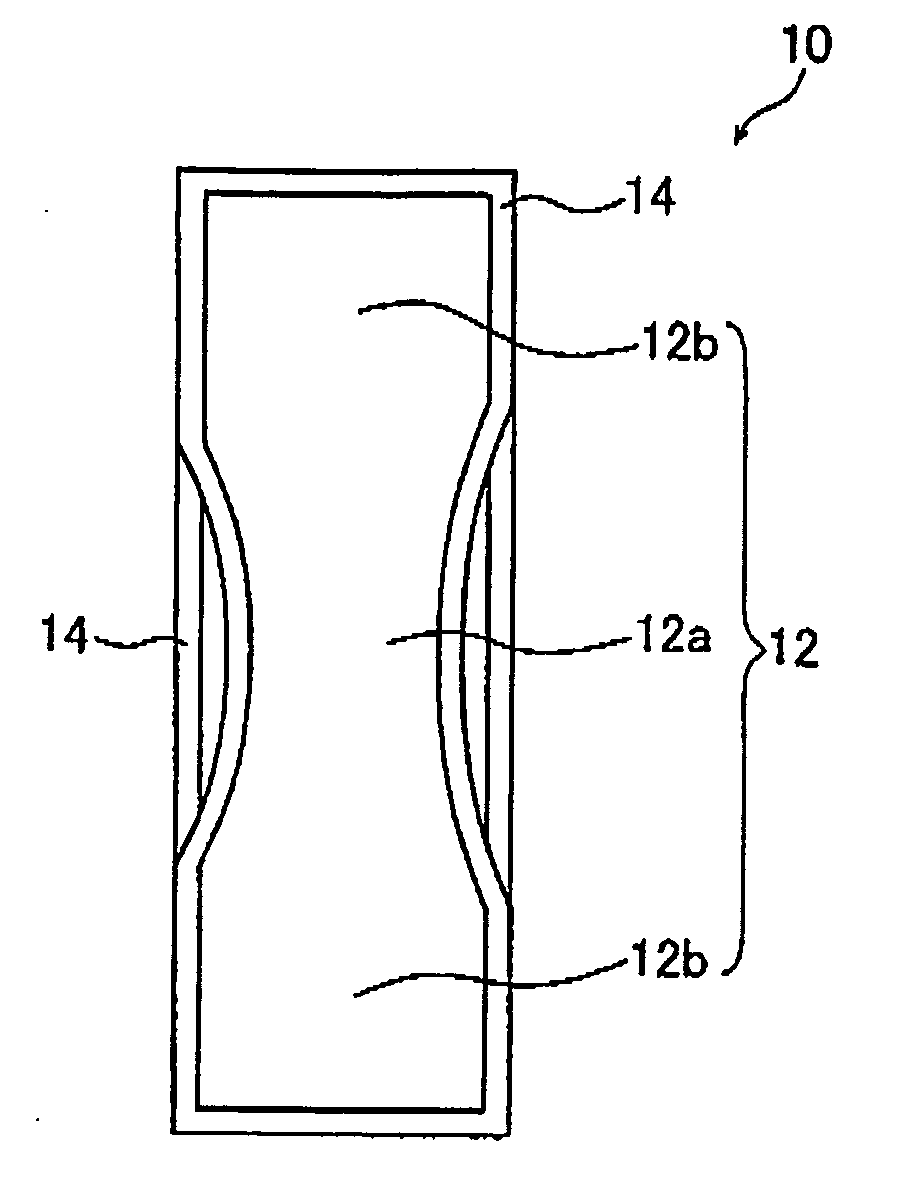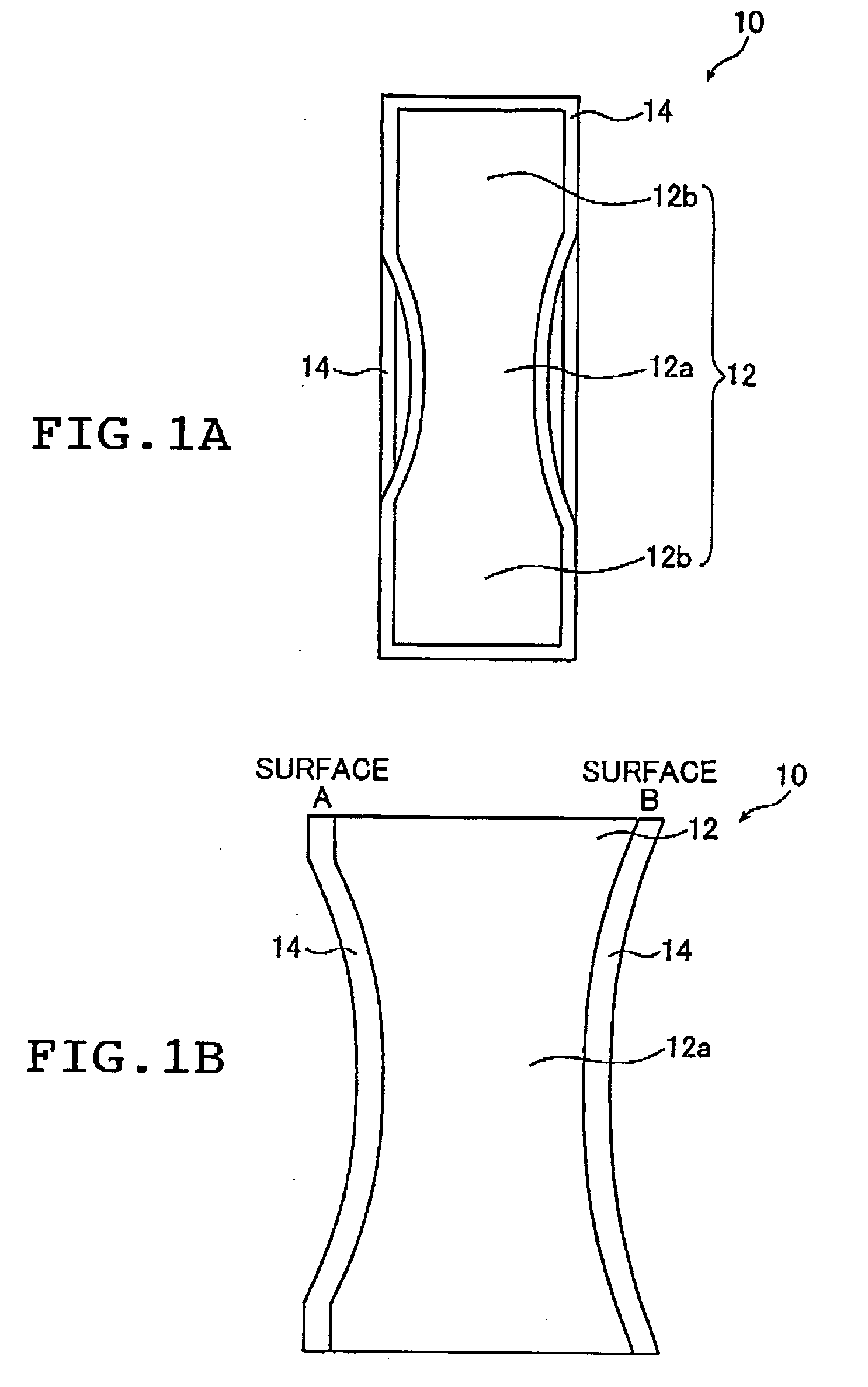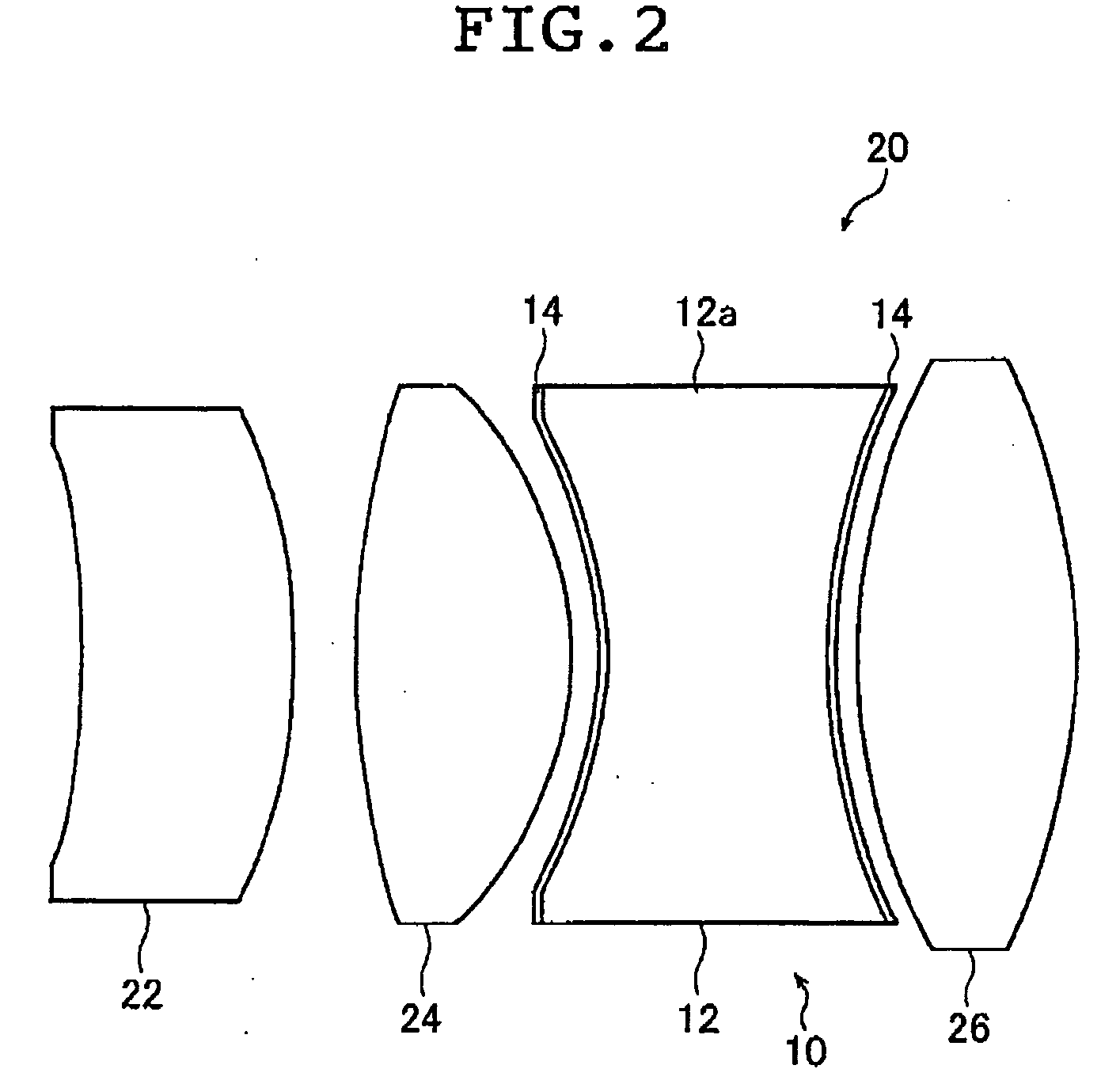Plastic optical components
a technology of optical components and plastics, applied in the field of optical components, can solve problems such as the change in the optical performance of plastic lenses, and achieve the effects of improving the optical performance of plastic lenses
- Summary
- Abstract
- Description
- Claims
- Application Information
AI Technical Summary
Benefits of technology
Problems solved by technology
Method used
Image
Examples
example 1
[0083] A polycarbonate lens having the above-described shape and size was prepared as the main body 12 of an optical component by injection molding.
[0084] By sputtering, a moisture-proof coating 14 made of Si and O was deposited in a thickness of about 100 nm on all surfaces of the main body 12 to fabricate the optical component 10 of the present invention. The sputter target was a silicon plate. During sputtering, Ar was introduced at the time the pressure reached 7×10−4 Pa and electric discharge was performed at 0.3 Pa for 5 minutes to effect plasma treatment on the lens surfaces of the main body 12. Subsequently, the Si target was pre-sputtered for 3 minutes. Thereafter, the discharge power was increased 4-fold and with O2 being introduced as a reactive gas, the main body 12 which was the polycarbonate lens was subjected to deposition treatment at 0.3 Pa until a clear moisture-proof coating 14 formed in a thickness of 100 nm.
[0085] The thus obtained optical component 10 of Exam...
example 2
[0086] A polycarbonate lens was fabricated as in Example 1 to make the main body 12. To all surfaces of this main body 12, an undercoating agent (WS-5000; product of Mitsui Takeda Chemicals, Inc.) was applied and dried at 80° C. for 30 minutes. Subsequently, a vinylidene chloride latex (L551B; product of ASAHI KASEI CORP.) was applied and dried at 110° C. for 30 minutes. Thereafter, the substrate was left to stand at 35° C. for 2 days until a clear moisture-proof coating 14 formed. The overall thickness of the moisture-proof coating 14 including the undercoat was 8 μm.
[0087] The thus obtained optical component 10 of Example 2 consisted of the main body 12 and the moisture-proof coating 14 and it was assembled into the lens unit 20.
PUM
| Property | Measurement | Unit |
|---|---|---|
| Transparency | aaaaa | aaaaa |
Abstract
Description
Claims
Application Information
 Login to View More
Login to View More - R&D
- Intellectual Property
- Life Sciences
- Materials
- Tech Scout
- Unparalleled Data Quality
- Higher Quality Content
- 60% Fewer Hallucinations
Browse by: Latest US Patents, China's latest patents, Technical Efficacy Thesaurus, Application Domain, Technology Topic, Popular Technical Reports.
© 2025 PatSnap. All rights reserved.Legal|Privacy policy|Modern Slavery Act Transparency Statement|Sitemap|About US| Contact US: help@patsnap.com



